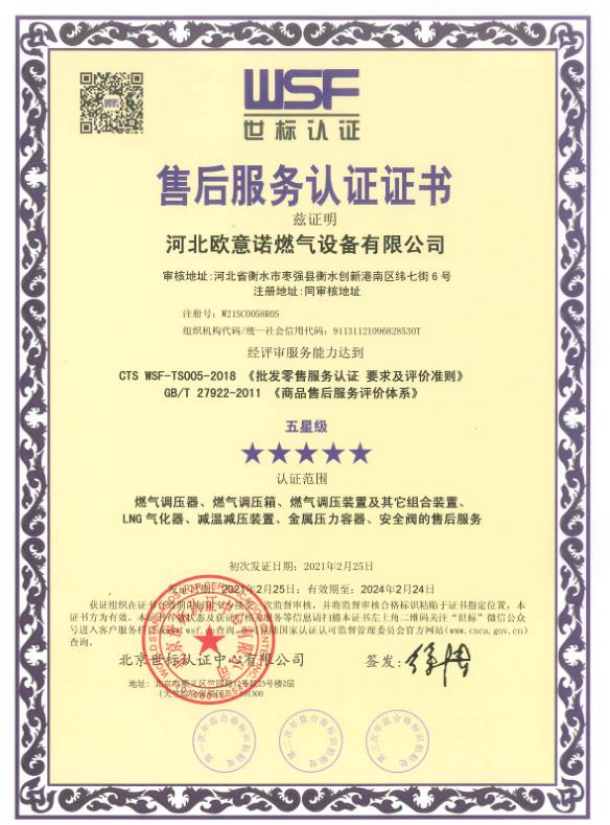
10 月 . 18, 2024 10:44
Back to list
Understanding Pressure Reduction Mechanisms and Their Importance in Fluid Systems
Understanding Pressure Reducing Devices Function and Importance
Pressure reducing devices are essential components in various industries where controlled pressure is crucial for safe and efficient operations. These devices help in managing the pressure levels of fluids or gases, ensuring that systems operate within their designed pressure parameters. This article delves into the significance, working principles, types, and applications of pressure reducing devices, providing a comprehensive overview for those interested in this vital aspect of engineering and industrial operations.
What is a Pressure Reducing Device?
A pressure reducing device, often referred to as a pressure regulator, is a mechanical apparatus designed to reduce the high inlet pressure of gases or liquids to a lower, manageable pressure output. These devices maintain a consistent output pressure regardless of fluctuations in the inlet pressure or changes in the flow demand. Their primary function is to protect downstream equipment and ensure optimal performance of various processes.
How Do Pressure Reducing Devices Work?
The working principle of pressure reducing devices typically involves a spring-loaded mechanism. When high-pressure fluid enters the device, it exerts force on a diaphragm or piston, which responds to the pressure changes. The diaphragm moves in response to the pressure, which allows for the adjustment of an outlet valve. This movement regulates the flow, reducing the pressure to the desired set point. By continuously monitoring the downstream pressure and adjusting the valve as necessary, the device maintains a steady, constant output pressure.
Types of Pressure Reducing Devices
There are several types of pressure reducing devices, each suited to different applications
1. Mechanical Pressure Regulators These are the most common type, using mechanical means to regulate pressure. They can be further classified into direct-acting and pilot-operated regulators, based on their design and application needs.
2. Electronic Pressure Regulators Utilizing electronic controls and sensors, these regulators offer precise pressure control and can be integrated into automated systems. They provide enhanced accuracy and responsiveness compared to mechanical types.
pressure reducing device

3. Back Pressure Regulators Primarily used in liquid systems, these regulators maintain a set pressure upstream of the device, allowing for consistent flow and pressure control.
4. Gas Pressure Regulators Specifically designed for gas applications, these regulators are crucial in industries where gas is used as a fuel or for process purposes, ensuring safety by preventing excessive pressure buildup.
Applications of Pressure Reducing Devices
Pressure reducing devices find applications across various industries, including
- Oil and Gas In this sector, pressure regulators control the pressure of natural gas and other substances in pipelines, preventing leaks and explosions.
- Water Supply Systems Municipal water systems utilize pressure reducing valves to maintain safe and stable water pressure for residential and commercial users.
- Manufacturing In manufacturing processes, especially those involving pneumatic systems, pressure regulators ensure the proper functioning of machines by controlling the air pressure supplied to them.
- Healthcare Medical gas regulators are critical in supplying the right pressure for anesthetic gases and other medical applications, ensuring patient safety.
Conclusion
Pressure reducing devices play an indispensable role in various applications by ensuring that pressure levels remain within safe and operational limits. Their ability to adapt to changing conditions and maintain consistent pressure allows industries to operate efficiently and safely. As technology advances, the development of more sophisticated pressure reducing devices, including electronic versions, continues to enhance their functionality and reliability, further underscoring their importance in modern systems. Whether in a manufacturing plant, a water supply system, or even in healthcare settings, these devices are the unsung heroes that keep processes running smoothly.
Latest news
-
Unlocking The Quality Gas Pressure ReducersNewsNov.01,2024
-
The Role of Gas Pressure Reducing StationsNewsNov.01,2024
-
The Importance and Functionality of Safety Relief ValvesNewsNov.01,2024
-
The Essential Role of Safety Valves in Natural Gas ApplicationsNewsNov.01,2024
-
The Essential Role of Gas Pressure RegulatorsNewsNov.01,2024
-
Enhance Your Premium Gas FiltersNewsNov.01,2024

